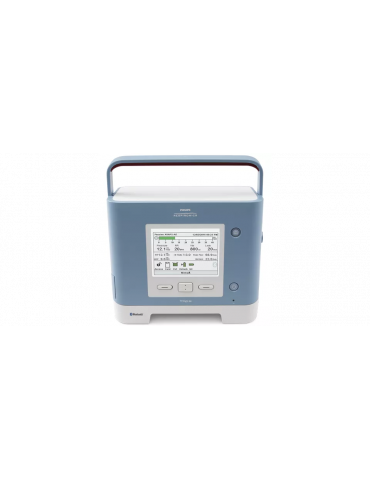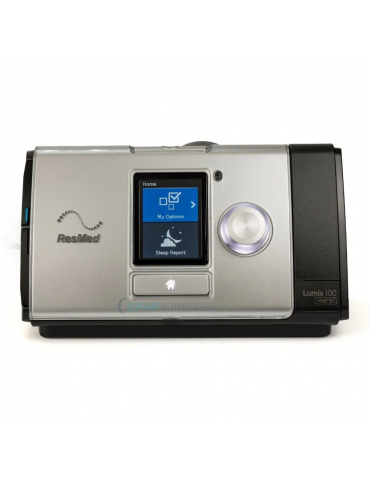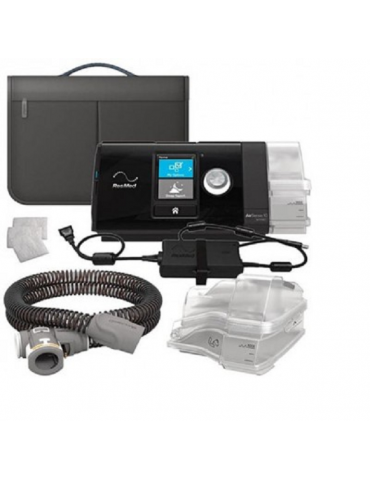Ventilator Basics and Beyond: What They Are and How to Pick One?

Trilogy Ventilator Setup at Home

Philips Trilogy EV300
What is a Trilogy Ventilator? Your Guide to This Portable Breathing Support Device
When we think of ventilators, we often imagine bulky machines in ICUs. But what if you could bring the power of hospital-grade breathing support home? That’s where the Philips Trilogy ventilator steps in.
Let’s break down what it is, how it works, and who it’s really for.
What Exactly Is a Trilogy Ventilator?
The Philips Respironics Trilogy is a line of compact, portable ventilators designed for home use, travel, and non-ICU environments. These ventilators help patients breathe by delivering pressurized air through invasive or non-invasive modes.
They use a smart microprocessor-controlled blower to offer precise, customizable breathing support. Whether you need volume control or pressure control, Trilogy devices are equipped for both. Popular models include the Trilogy 100, Trilogy 200, and Trilogy EVO. Each has advanced features, but all share a common interface to simplify training and transition between hospital and home.
In short: Trilogy delivers hospital-level ventilation in a portable, user-friendly form.
How Trilogy Is Different from Traditional Ventilators
Lightweight & Portable: Weighing around 5.6 kg, Trilogy devices are designed to move. You can use them at home, in an ambulance, or even on a wheelchair with a mount.
Battery-Powered: Internal and external batteries allow several hours of use without being plugged in.
Home-Friendly Interface: Designed for caregivers and patients, not just medical professionals.
Flexible Modes: Trilogy supports both invasive (via trach or ET tube) and non-invasive ventilation (via mask).
Long-Term Use: It’s not just for emergencies—many patients use it 24/7 at home for months or years.
Compared to ICU ventilators, Trilogy offers fewer complex sensors but is more practical for ongoing daily support.
Who Uses Trilogy Ventilators?
Trilogy devices are used by patients who require continuous or intermittent respiratory support but are stable enough to stay at home.
Common patient groups include:
Individuals with chronic respiratory diseases (like COPD or severe sleep apnea)
People with neuromuscular disorders such as ALS or muscular dystrophy
Pediatric patients (as small as 5 kg, depending on the model)
Adults transitioning from ICU to home care
Long-term oxygen therapy users who need advanced ventilation
Doctors often prescribe Trilogy for home ventilation programs or step-down care after hospital discharge.
Is Trilogy the Best Ventilator for Home Use?
That depends—but it’s definitely a strong contender.
Trilogy is built with home use and mobility in mind. Some versions offer cloud connectivity for remote monitoring by your care team. Others include automatic modes that adjust breathing support based on your real-time needs.
It's designed for:
24/7 support if needed
Seamless use by caregivers or patients with minimal training
Integration into everyday life outside a hospital
However, it's important to note that Trilogy ventilators cost more than basic BiPAP or CPAP machines. They also require a doctor’s prescription and are best suited for people who need true ventilatory support—not just oxygen therapy or basic sleep apnea treatment.
Other Ventilator Options Besides Trilogy
While the Philips Trilogy series is a favorite for home ventilation, it's far from the only option. Depending on your needs, there may be other devices that offer better portability, different features, or a more affordable price.
Here are a few popular alternatives:
ResMed Astral Series
Known for its ultra-quiet operation and long battery life, the Astral is a strong contender in the portable ventilator space. It offers both invasive and non-invasive ventilation, advanced settings, and sleek design. It’s often praised for its compact form, ease of use, and graphical interface.LTV Series by Medtronic
The LTV 1200 and LTV 1150 are lightweight and budget-friendly ventilators ideal for long-term use. While they offer fewer modes than some higher-end devices, they’re reliable and easy to operate, making them a good choice for patients needing stable, basic ventilatory support at home.Breas Vivo Series
The Vivo ventilators (like Vivo 45 or 60) come with modern features like touchscreens, whisper-quiet performance, and customizable alarm settings. These units are well-suited for both adult and pediatric patients. They strike a nice balance between comfort and advanced functionality.Hamilton T1
Originally designed for transport and ICU-level care, the Hamilton T1
has become a go-to for patients needing high-performance ventilation on the move. It’s rugged, packed with ICU-grade monitoring capabilities, and can transition between home and hospital seamlessly. While heavier and more complex, it’s powerful and precise.
Choosing the Right Ventilator: Final Thoughts
When selecting a ventilator, here’s what to consider:
1. Medical Need
Work with your pulmonologist or respiratory therapist to determine the right mode and settings.
2. Daily Lifestyle
If you're active or travel frequently, Trilogy’s portability and battery life might be a big advantage.
3. Budget & Coverage
Ventilators like Trilogy are a significant investment. Check if your insurance covers rental or purchase. Some government health schemes also support home ventilator use.
4. Support & Maintenance
Ask about technical support, spare parts, and training. Reliable customer service is crucial when you're dealing with life-support equipment.
ResMed Lumis 100 VPAP ST-BIPAP Machine | ResMed Lumis 100 VPAP ST Non- Invasive Ventilator
RESMEDDisclaimer & References
This article is for general information only and does not substitute professional medical advice. Always consult your doctor or respiratory therapist before making decisions about ventilator use or selection.
Trusted Sources:








